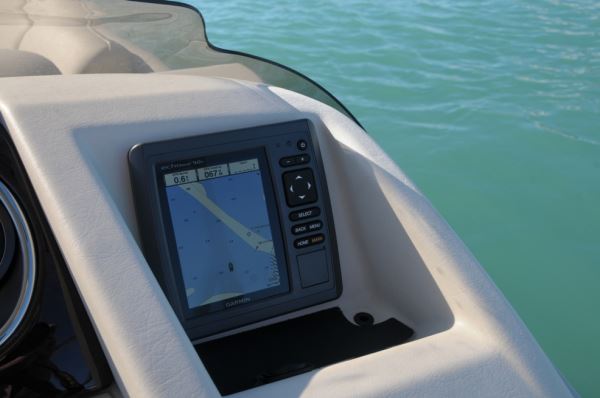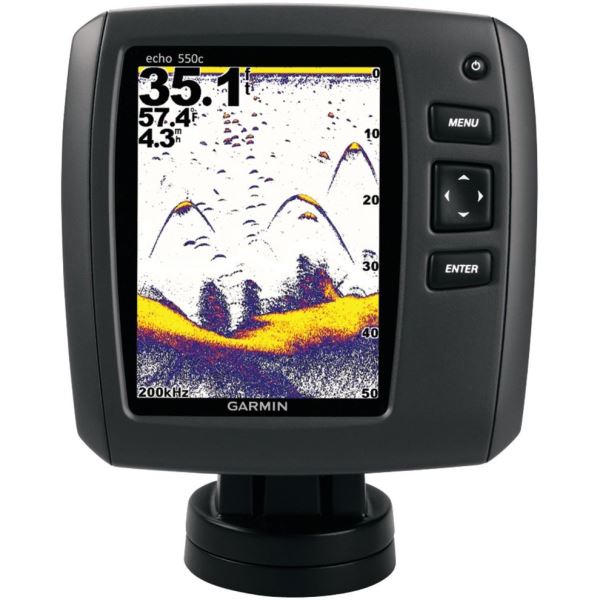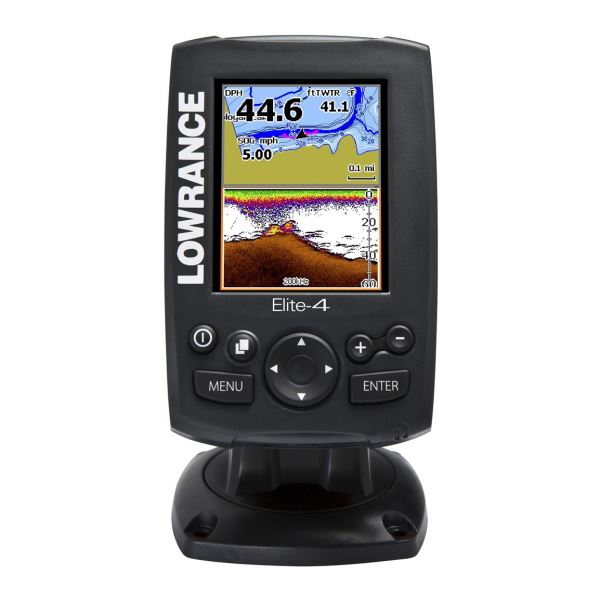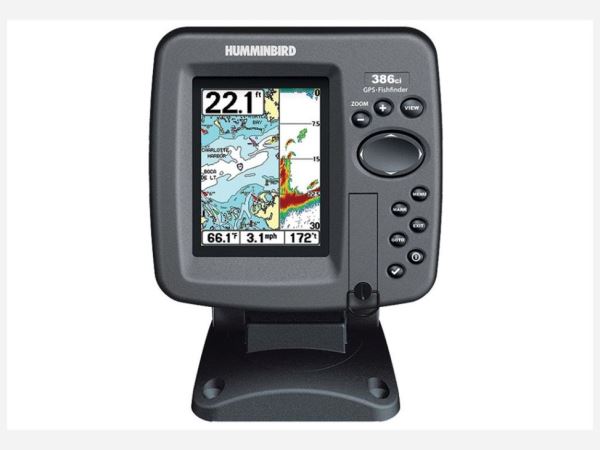
Like many anglers, the depth finder aboard my first boat was a fishing rod, my fish finders were gulls and my earliest “GPS” coordinates were trees, docks and other prominent shore features.
Fast forward three decades and you find me monitoring the latest side-imaging fish finding technology from Humminbird, a compact unit on my minimal dash complete with a built-in GPS that talks to a transducer that is built-into the base of a Minnkota Terrova trolling motor mounted on the bow of my pontoon boat.
Am I catching more fish as a result of this ability to “see” what’s going on below?
Yep.
More Than Mere Depth
A standard feature (and popular option) aboard many of today’s pontoon and deck boats is a simple depth finder, often with a small display mounted onto the dash, among other similarly-sized gauges including the tachometer and speedometer. This depth-finding feature is valuable for obvious reasons, especially for pleasure boaters whose only concern about what is beneath their hull is that there is enough water to keep their engine’s lower unit from striking bottom.
Fishermen, on the other hand, care about what’s in the water as much as how deep it is. And not only where the bottom is, but what it’s made of. Despite using the same basic sonar technology, the differences between a mere “depth finder” and a modern “fish finder” are significant.
 In addition to the water’s depth, fish finders supply a reliable and accurate “window” into the underwater world. By transmitting and receiving high-frequency and low-frequency
In addition to the water’s depth, fish finders supply a reliable and accurate “window” into the underwater world. By transmitting and receiving high-frequency and low-frequency
sound waves via a transducer, the units are able to detect different types of bottoms, underwater structure and fish, information about which is relayed to a large screen display for viewing by the angler. A wide variety of fish finders are available, offering different levels of power, sensitivity and detail to allow the angler to choose a unit that’s best for the fishing situation and his or her individual needs.
For example, high-frequency fish finders (180 kHz to 220 kHz and higher) transmit a “beam width” that is more directional than that sent by low-frequency sounders, making these units more effective at locating fish over a wider area. These fish-finders don’t
usually penetrate to great depths (usually a maximum of 400 feet), so
smaller targets along the bottom may be missed. Low-frequency units (typically 30 kHz to 60 kHz), on the other hand, transmit sound waves that will penetrate further down, making these sounders better for locating fish and structure in deeper water. You can also purchase “dual frequency” fish finders, which provide both high- and low-frequency options in a single unit.
Fish finders also vary when it comes to power/range and the detail of their displays. While one unit may only be able to provide returns from a few hundred feet at most, another unit may be capable of probing much greater depths. An inexpensive fish finder with a monochrome display may offer a limited amount of detail, while a more advanced (ie: expensive) model may provide a detailed color graphic display of underwater ledges, rock piles, wrecks and fish.
How They Work
 Fish finders generate sound waves that travel at different speeds through
Fish finders generate sound waves that travel at different speeds through
substances depending on their density and characteristics and display any object with a density differing from that of water. The actual density of the object hit by the sound wave determines the size of the reflected “echo” on the fish finder screen. For example, a hard rock bottom will create a stronger echo “return” than sand or mud because it is denser. An individual fish shows up on the screen because the difference in density between the air bladder (or bones) is greater than that of the muscle within the fish and the surrounding water. A fish finder may even detect a school of baitfish as one big air pocket, and a corresponding echo will be relayed to the unit. Because predator fish usually hang around such food sources, when a “cloud” of bait appears on your fish finder screen with separate arcs nearby, it’s time to break out the tackle. Chances are the larger “marks” are the gamefish you seek.
Fish finders come in both LCD (Liquid Crystal Display) and CRT (Catho Ray Tube) versions, with color or monochrome display, and a higher or lower screen resolution (pixel count). Generally, LCD fish finders are more compact and draw less current than the CRT units. While some LCD models feature “gray-on-gray” displays, most manufacturers now offer color LCD units, which offer anglers more information regarding the intensity of returns, making it easier to identify different types of fish, structure and bottoms.
Speaking of seeing, early LCD fish finder screens were tough to see in sunlight, but color displays and protective lenses have made today’s LCD displays much easier
to read.
All-In-One

In recent years, several manufacturers have introduced new “integrated” models that combine the functions of an echo sounder, GPS/chart plotter—and even radar—in a single unit. As with my Humminbird, not only do these combo units offer space-saving advantages, they allow the angler to incorporate the information supplied by the GPS function to mark good fishing spots, return to same, not to mention that all-important task of getting back to the dock or ramp!

